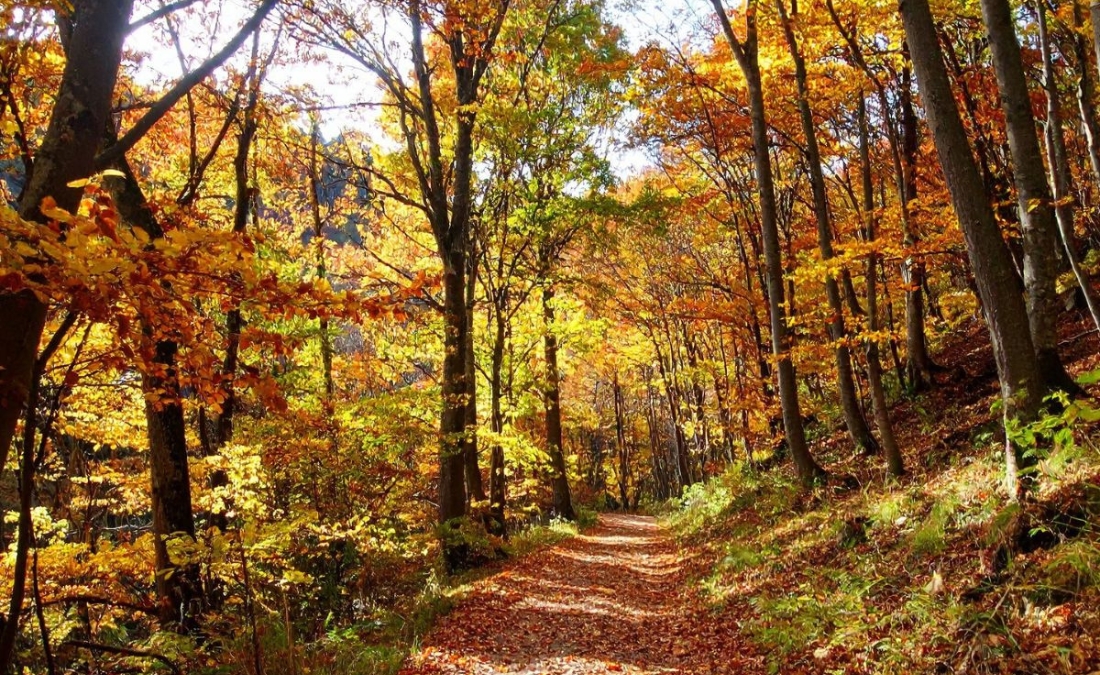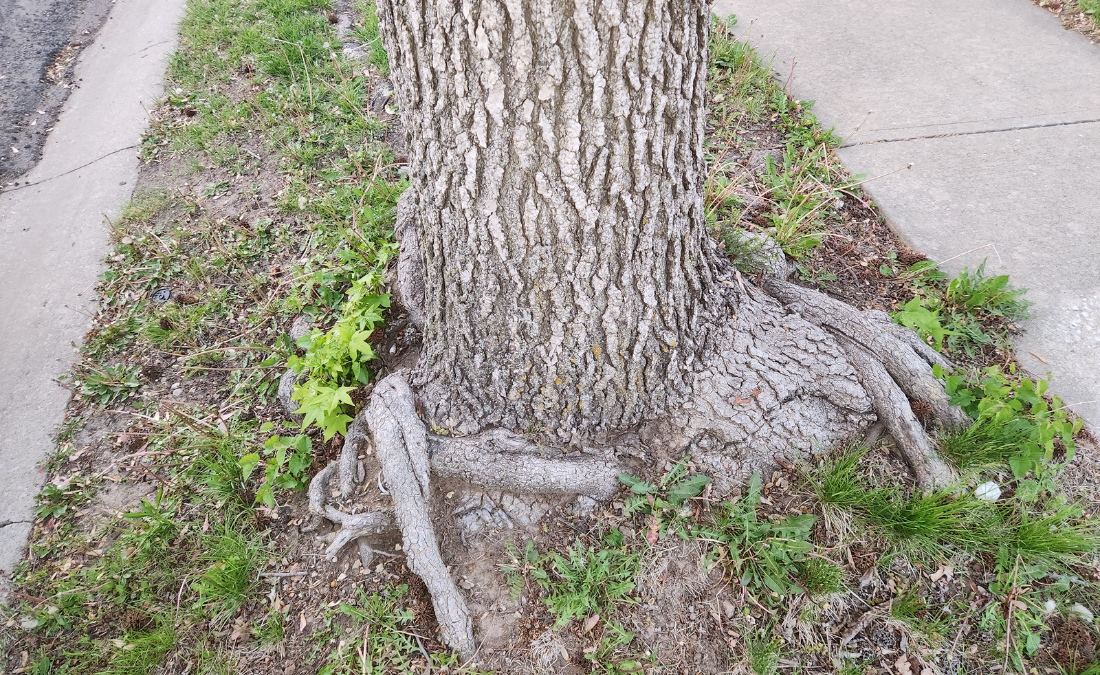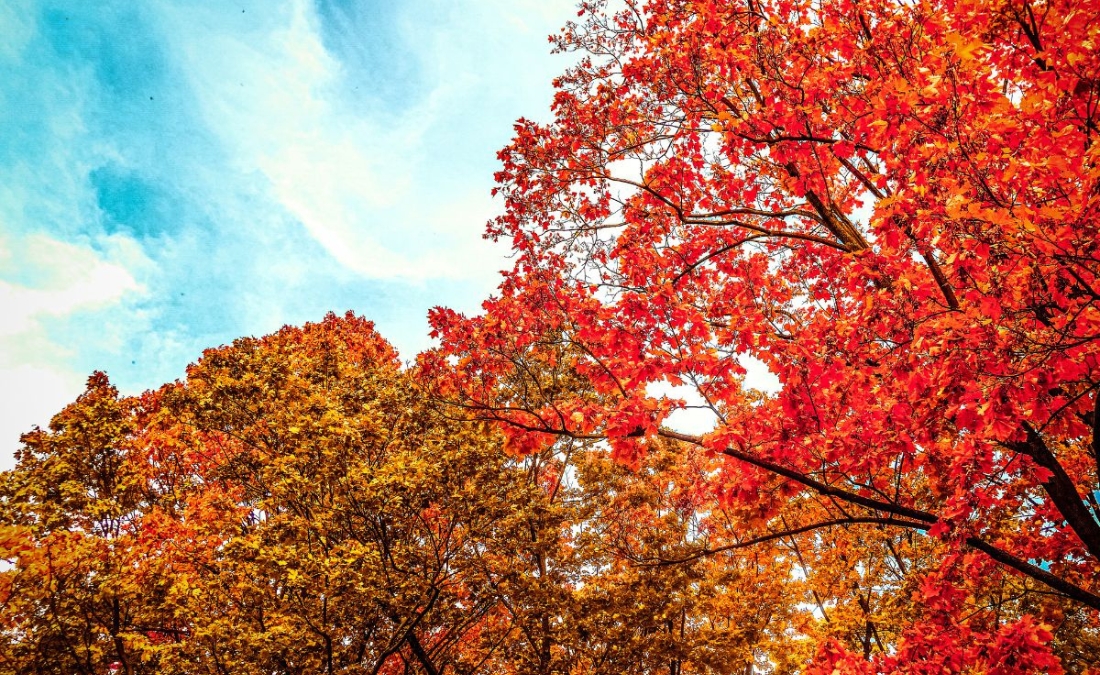Is Your Tree Dormant or Dying? A Guide to Winter Tree Care in Des Moines
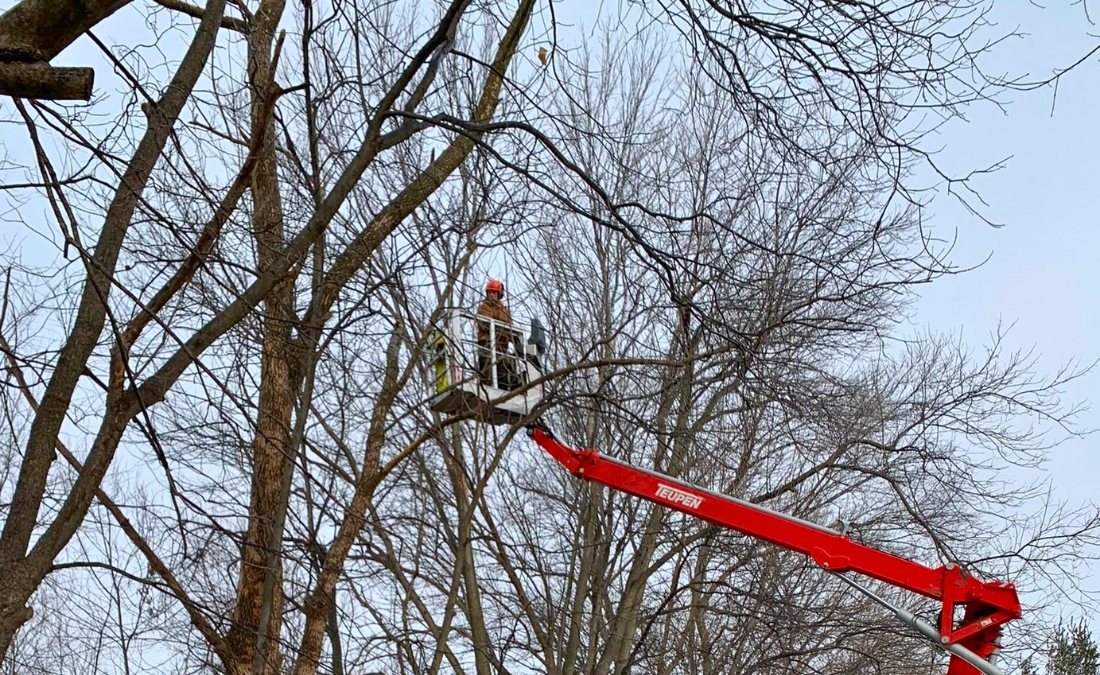
Cold snaps ahead? No problem. Our Des Moines winter tree care guide walks you month by month to keep trees thriving now and blooming come spring.
Did your tree lose leaves early this fall, show yellowing too early, or develop thin patches throughout the canopy? Now that winter is just about here, you might be wondering: Is my tree just dormant, or is it actually declining?
If you noticed these warning signs, you’re right to be concerned – but winter tree care in Des Moines starts with understanding what you’re dealing with. Learn how to spot trouble early with DIY tests, stay on track with a month-by-month checklist, and see how Plant Health Care programs can bring struggling trees back to life by spring.
Key Takeaways
- Winter is your recovery window for trees that struggled in fall; assessment and treatment now sets up your trees for spring success.
- DIY tests, like the scratch test and bud inspection, help identify dormancy versus decline, but professional assessment diagnoses root causes.
- Des Moines trees need specific care each month, including winter prep in November prep, oak pruning in December-February, and pest and disease treatment in January-February.
- Struggling trees need comprehensive Plant Health Care (PHC) programs addressing underlying causes, not one-time symptom treatments.
- Winter assessment by an ISA Certified Arborist creates the foundation for effective long-term recovery plans and overall tree health.
How Can You Tell If Your Tree Is Dormant or Actually Declining?
Your trees enter dormancy when days get shorter and temperatures drop; it’s their natural way of protecting themselves through winter, and not usually a sign of trouble. The trick is knowing the difference between a healthy tree conserving energy and one that’s losing its vitality.
What Normal Winter Dormancy Looks Like
Even dormant trees show clear signs of life, including:
- Flexible branches that bend without snapping
- Plump visible buds at branch tips
- Intact bark with no missing sections
- Green cambium tissue (the living layer) just under the bark surface
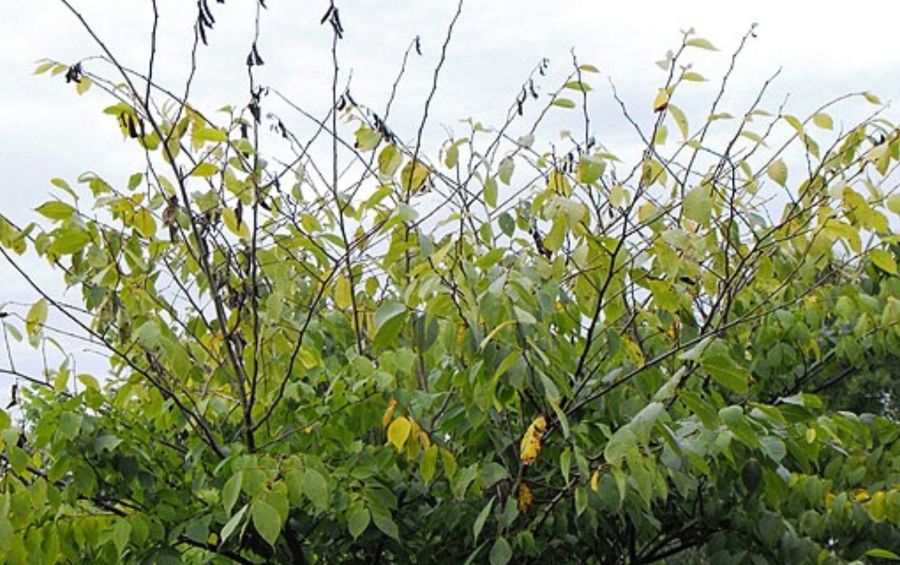
This elm tree shows classic Dutch Elm Disease symptoms: thinning canopy with dead branches and yellowing leaves that won’t recover through winter.
Warning Signs Your Tree Is Actually Declining
If your tree showed these symptoms this past fall, it may be declining rather than simply entering dormancy:
- Premature leaf drop before neighbors’ trees shed
- Yellowing that doesn’t follow normal fall color patterns
- More than 25% canopy thinning
- Dead branch tips scattered throughout the crown
- Bare patches where leaves never filled in
And these winter red flags indicate serious problems:
- Absent or shriveled buds
- Extensive bark damage or missing sections
- Dead leaves still clinging to branches
Here’s the key distinction: dormancy is temporary and reverses in spring. Decline is progressive deterioration that continues without intervention.
What Simple Tests Can You Perform to Check Your Tree’s Health?
You can perform these quick assessments before scheduling professional winter tree care:
- Scratch Test: Gently scratch small branches at ground level. If you find green, moist tissue underneath, the tree is still alive; if your scratch reveals brown, dry tissue, that is an indication that the tree is dead.
- Bud Inspection: Dormant trees have plump visible buds. Shriveled or absent buds indicate problems.
- Branch Flexibility: Living branches bend; dead branches snap easily.
- Bark Check: Look for cracks, missing sections, fungal growth, or sunken areas (especially on southwest side where sun damage typically occurs).
If all tests show signs of life, your tree is likely just dormant. Mixed results or mostly dead tissue means you need a professional assessment and most likely a comprehensive plant health care program to address root causes of stress or decline.
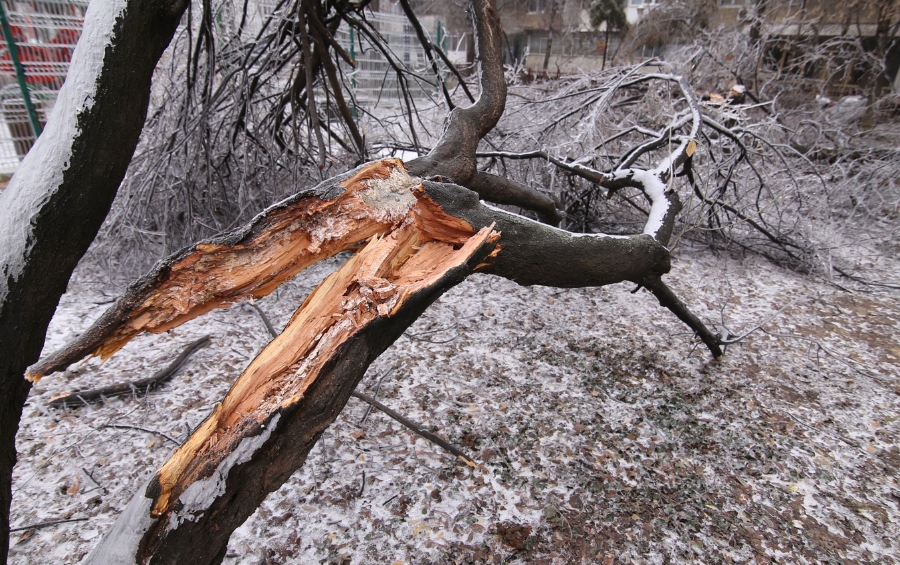
How Can You Protect Stressed Trees During Winter?
If your tests showed signs of decline, these protective measures could help minimize winter damage while you plan for professional care.
- Prevent Sunscald Damage: Intense winter sun warms bark tissue during the day, then rapid temperature drops at sunset refreeze and kill the cells. This creates those sunken, cracked areas on the southwest side of trunks. Young trees and thin-barked trees, such as maples, beech, dogwood, and fruit trees, are most vulnerable. Apply white or light-colored tree wrap before the first freeze and remove it in the spring.
- Prevent Winter Burn: Winter burn is the result of frozen ground preventing water uptake while warmer air forces trees to use moisture they can’t replace. Prevention methods include anti-desiccant sprays applied in late fall, deep watering before ground freeze, and windbreak protection for high-value specimens.
- Handle Winter Storms Safely: Gently brush light, fluffy snow from small branches within safe reach and call professionals for significant storm damage assessment.
What Does a Complete Des Moines Winter Tree Care Checklist Include?
Here’s your month-by-month guide to protecting your trees through winter and setting them up for a strong spring recovery.
November: Prepare Trees for Winter
Before the ground freezes, take these essential steps to prepare your trees for winter:
Assess Your Tree’s Current Condition
- Conduct health assessment using scratch test and bud inspection
- Look for any signs of decline from fall
Take Proper Precautions to Protect Against Winter Damage
- Continue deep watering until ground freezes
- Apply protective tree wrap to thin-barked species (maples, beech, dogwood, honey locust, fruit trees)
- Apply anti-desiccant spray to evergreens (arborvitae, white pine) to prevent winter burn
- Spread 2-4 inches of mulch around root zone, keeping it away from trunk
If any tests revealed noticeable issues and signs of decline, schedule a professional assessment right away. Proactive measures are always preferred when it comes to winter tree care in Des Moines.
December: Prune Oaks During the Safe Winter Window
Because oak wilt spreads via sap beetles that are attracted to fresh pruning wounds, December through February is the only safe window for pruning oak trees. These beetles, which are most active between March and November, carry deadly fungal spores from infected oaks to healthy ones, often killing previously healthy trees within weeks. The winter window is safe because these harmful pests are inactive during cold weather.
Additional December Tree Care Tasks to Complete
- Monitor for animal damage from rabbits and deer
- Inspect after storms for damage but don’t attempt removal yourself
Expert Insight: “We get calls every spring from homeowners who had their oaks pruned in March or April – and by June, the tree’s already declining. Oak wilt doesn’t give second chances. Winter pruning is the only way to protect these trees.” – Chase Anderson, Branch Manager and Certified Arborist at Arbor Masters Des Moines
January-February: Focus on Peak Dormant Tree Care
This is the best time of year to schedule dormant pruning. Late winter is best for most deciduous trees because pruning wounds can immediately begin compartmentalizing (sealing off) when spring growth starts in February-March.
Other Tree Services to Schedule in Late Winter
- Apply Dormant Oil Treatment for Pest Prevention: If your tree showed signs of pest damage this past year – like aphids, scale insects, or spider mites – late winter is when you can get ahead of the problem. Dormant oil applications work when temperatures stay above 40°F for 24 hours. These treatments suffocate overwintering pest eggs before they hatch in spring, stopping infestations before they start. It’s an Integrated Pest Management approach that doesn’t leave toxic residue.
- Plan Your Plant Health Care Program: Winter assessment identifies issues like root health problems, soil compaction, nutrient deficiencies, and pest pressure. And while treating the symptoms is a good start, that alone does not address why the tree declined in the first place. Comprehensive programs treat causes (poor soil, chronic stress), not just symptoms (yellowing leaves) before spring begins.
March: Prepare Trees for Spring Recovery
As winter winds down, these final steps set your trees up for healthy spring growth:
- Remove any tree wrap applied in November (prevents moisture trapping and pest issues)
- Monitor for early stress signs (delayed bud break, dieback)
- Confirm spring treatment timing with arborist
- Resume regular watering
Why Do Struggling Trees Need Comprehensive Plant Health Care Programs?
One-time treatments only address symptoms without fixing the underlying problems causing decline. Rather than chasing individual problems as they appear, comprehensive PHC programs address all stress factors simultaneously with a year-round approach:
- Seasonal treatments timed to tree development
- Soil assessment and amendment
- Integrated pest management
- Proper pruning
- Root zone care
Over time, trees showing decline can fully recover – typically within 2-3 growing seasons with consistent implementation, but you should see initial improvements, like better bud break and fuller canopy, by the first spring.
When Should You Call a Professional Arborist?
While DIY tests help identify potential problems, professional assessment is essential for struggling trees and safety concerns. Contact an arborist if:
- Trees are leaning toward structures
- Large dead branches are hanging over buildings, cars, or power lines
- Extensive storm damage has occurred
- Tree is showing more than 25% canopy decline this last fall
- DIY tests produced mixed, uncertain results
- You see visible decay or fungal growth
- You want long-term recovery program versus crisis management
What a Professional Tree Assessment Provides
Winter assessment delivers complete evaluation of structure, health, and root system, plus accurate diagnosis of decline causes (usually multiple factors). You’ll receive:
- Comprehensive treatment plan addressing all issues
- 12-month Plant Health Care program with seasonal schedule
- Clear guidance on salvageability versus removal with costs
PRO TIP: Winter tree assessments have a distinct timing advantage because bare branches allow clearer views of structure and problems, plus time to begin treatments before spring stress.
Frequently Asked Questions About Winter Tree Care in Des Moines
When should I remove a tree versus try to save it?
Trees with more than 50% canopy damage should typically be removed for safety. Other removal indicators include one-third or more of the trunk hollow or rotted, leaning more than 15 degrees, or posing immediate danger to structures. Trees with 25-50% decline may be salvageable depending on the cause – disease is harder to reverse than drought or nutrient stress. An ISA Certified Arborist can assess whether your tree can recover or if removal is the safer option.
What’s the difference between dormant oil and other pest treatments?
Dormant oil is applied in late winter (February-March) when temps stay above 40°F. It’s an Integrated Pest Management practice that suffocates overwintering pest eggs without toxic residue. Unlike growing season insecticides, dormant oil prevents spring population explosions proactively.
Should I water evergreens during Iowa winters?
Yes, water evergreens before the ground freezes and on warm days above 40°F when the ground thaws. Iowa DNR forecasts winter burn damage to arborvitae and white pine because frozen ground prevents water uptake while above-freezing temperatures force moisture use. Deep watering helps prevent desiccation.
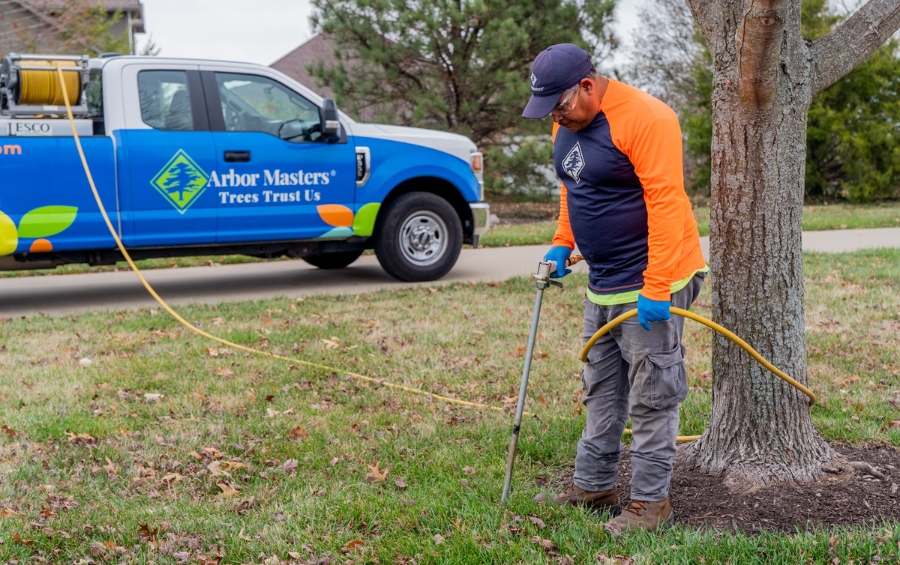
Start Your Tree’s Winter Recovery Today in Des Moines
Winter isn’t a waiting period; it’s your opportunity to build a recovery plan addressing the root causes of decline. While DIY tests help identify concerns, long-term health requires professional assessment and sustained PHC programs. Many declining trees can fully recover with proper diagnosis and year-round care.
Schedule a comprehensive winter assessment with Arbor Masters’ ISA Certified Arborists. We’ll diagnose underlying causes and create a comprehensive plant health care program tailored to your trees’ needs.
Call us at 515-218-2025 or schedule online today.

Get the latest local news, tree care tips, special offers, and company updates directly to your inbox! It's easy to subscribe and there's no spam - we promise.
"*" indicates required fields


